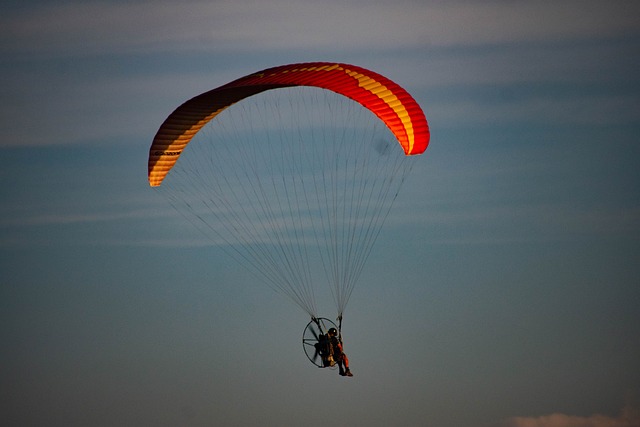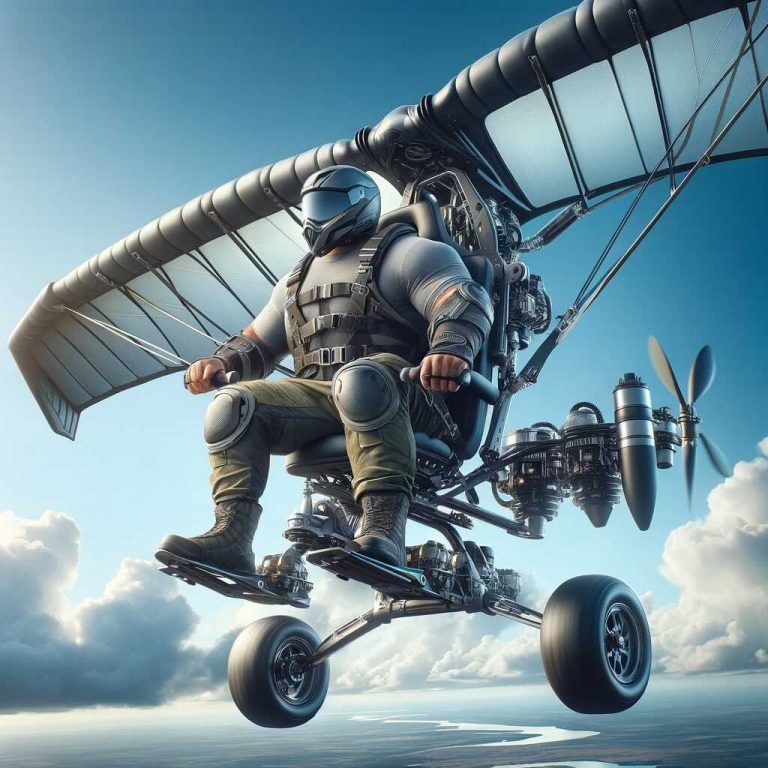Paramotoring is a popular recreational activity that involves flying a motorized paraglider. One of the key aspects that can greatly affect the overall experience of flying a paramotor is speed and range.
In this article, I will explore the different factors that can affect paramotor speed and range, and provide some practical tips for maximizing both. Additionally, I will discuss how to choose the right paramotor for your needs based on its speed and range of capabilities. By the end of this article, you will have a better understanding of how far and fast you can fly on a paramotor, and how to make the most of your flying experience.
Understanding Paramotor Speed
Paramotor speed refers to the rate at which a paramotor travels through the air. It is influenced by several factors, including wind, altitude, weight, and engine power.
- Wind: The direction and speed of the wind can greatly impact the speed of a paramotor. Tailwinds can increase speed, while headwinds can slow it down.
- Altitude: Paramotor speed can also vary depending on the altitude at which you are flying. Generally, the higher you fly, the faster you can go due to reduced air resistance.
- Weight: The weight of the paramotor and its pilot also plays a role in determining its speed. Heavier loads can decrease speed, while lighter loads can increase it.
- Engine Power: The engine power of a paramotor determines its maximum speed. More powerful engines can achieve higher speeds than less powerful ones.
It is important to note that there is a difference between airspeed and groundspeed. Airspeed is the speed at which the paramotor is moving through the air, while groundspeed is the speed at which it is moving over the ground. Groundspeed takes into account the effect of wind on the paramotor’s forward motion.
Real-world examples of paramotor speed can vary depending on different conditions. A typical cruising speed for a paramotor is around 25-30 mph, while a maximum speed can be around 45-50 mph. However, factors such as wind and altitude can significantly impact the actual speed experienced while flying a paramotor.
Factors Affecting Paramotor Range
Paramotor range refers to the distance that a paramotor can travel on a single tank of fuel. It is influenced by several factors, including fuel efficiency, wind, altitude, weight, and weather.
- Fuel efficiency: The fuel efficiency of a paramotor is one of the primary factors affecting its range. More efficient engines can travel longer distances on a single tank of fuel.
- Wind: The direction and speed of the wind can greatly impact the range of a paramotor. Tailwinds can increase range, while headwinds can decrease it.
- Altitude: The altitude at which you are flying can also impact your paramotor’s range. Generally, higher altitudes can increase range due to reduced air resistance.
- Weight: The weight of the paramotor and its pilot can also affect range. Heavier loads can decrease range, while lighter loads can increase it.
- Weather: Weather conditions such as temperature and humidity can also affect range. For example, flying in hot and humid conditions can decrease engine performance and reduce range.
It is important to plan for the right fuel capacity to ensure maximum range. The range of a paramotor can vary greatly depending on the amount of fuel it can carry. A typical paramotor can carry enough fuel for a range of 100-150 miles.
Real-world examples of the paramotor range can vary depending on different conditions. A typical range for a paramotor is around 100-150 miles on a single tank of fuel. However, factors such as wind, altitude, weight, and weather can significantly impact the actual range experienced while flying a paramotor.
Tips for Maximizing Paramotor Speed and Range
If you’re looking to take your paramotoring to the next level, it’s essential to maximize your speed and range. With the right tips and techniques, you can unlock the full potential of your paramotor and achieve an unforgettable flying experience. Here are 7 tips to maximize your paramotor speed and range.
- Proper Weight Management: One of the most important factors affecting both paramotor speed and range is weight. Ensure that you and your equipment are as light as possible without sacrificing safety. Consider the weight of your fuel, clothing, and other accessories, and pack only what you need.
- Use High-Quality Fuel: The quality of fuel you use can have a significant impact on engine performance, and thus, speed and range. Use high-quality fuel with the appropriate octane rating for your engine to ensure maximum efficiency.
- Optimal Engine Tuning: Proper engine tuning is essential for maximizing paramotor performance. Ensure that your engine is properly tuned and maintained according to the manufacturer’s recommendations.
- Plan Your Flight Route: Before taking off, plan your flight route carefully to take advantage of favorable wind conditions and avoid unfavorable ones. This can help increase both speed and range.
- Fly at Optimal Altitude: Flying at the optimal altitude can increase both speed and range. Use the altitude that maximizes the efficiency of your engine while keeping safety in mind.
- Keep Your Equipment in Good Condition: Regular maintenance and upkeep of your paramotor and equipment are essential for ensuring maximum performance. Make sure to clean and inspect your equipment regularly and address any issues promptly.
- Safety First: While speed and range are important, safety should always be your top priority. Always fly within your skill level and experience, wear proper safety gear, and stay up-to-date with current safety practices and guidelines.
Choosing the Right Paramotor for Your Needs
When choosing a paramotor, it is important to consider your experience level, desired use, and budget. Here are some key factors to consider:
- Experience Level: Your level of experience as a paramotor pilot should be the first factor you consider when choosing a paramotor. Beginner pilots should look for paramotors that are easy to handle and forgiving, while experienced pilots may be looking for something more advanced.
- Desired Use: Consider the type of flying you plan to do most often. Will you be flying for leisure or for sport? Do you want to fly long distances or perform acrobatic maneuvers? Answering these questions will help you determine the type of paramotor that is best suited for your needs.
- Weight and Portability: The weight and portability of a paramotor can be important factors, especially if you plan to travel with it. Lighter paramotors are generally easier to transport but may sacrifice some durability.
- Speed and Range: If you plan to fly long distances, you will need a paramotor with good speed and range. Make sure to consider the engine power, fuel efficiency, and other factors that influence speed and range.
- Cost: Paramotors can vary greatly in price. While it may be tempting to opt for a lower-priced model, keep in mind that a more expensive paramotor may provide better performance and durability in the long run.
- Manufacturer Reputation: Finally, consider the reputation of the manufacturer. Look for a reputable manufacturer with a proven track record of producing high-quality, reliable paramotors.
Conclusion
In conclusion, understanding paramotor speed and range is essential for a safe and enjoyable flying experience. Factors such as wind, altitude, weight, engine power, fuel efficiency, and weather can all influence paramotor speed and range. By following some practical tips such as proper weight management, use of high-quality fuel, optimal engine tuning, planning your flight route, and keeping your equipment in good condition, you can maximize both speed and range.
Finally, choosing the right paramotor for your needs involves considering factors such as your experience level, desired use, budget, portability, speed, range, and manufacturer reputation. By taking these factors into consideration, you can choose a paramotor that provides you with the best possible flying experience. So get out there, explore the world of paramotoring, and enjoy the freedom of flight!








